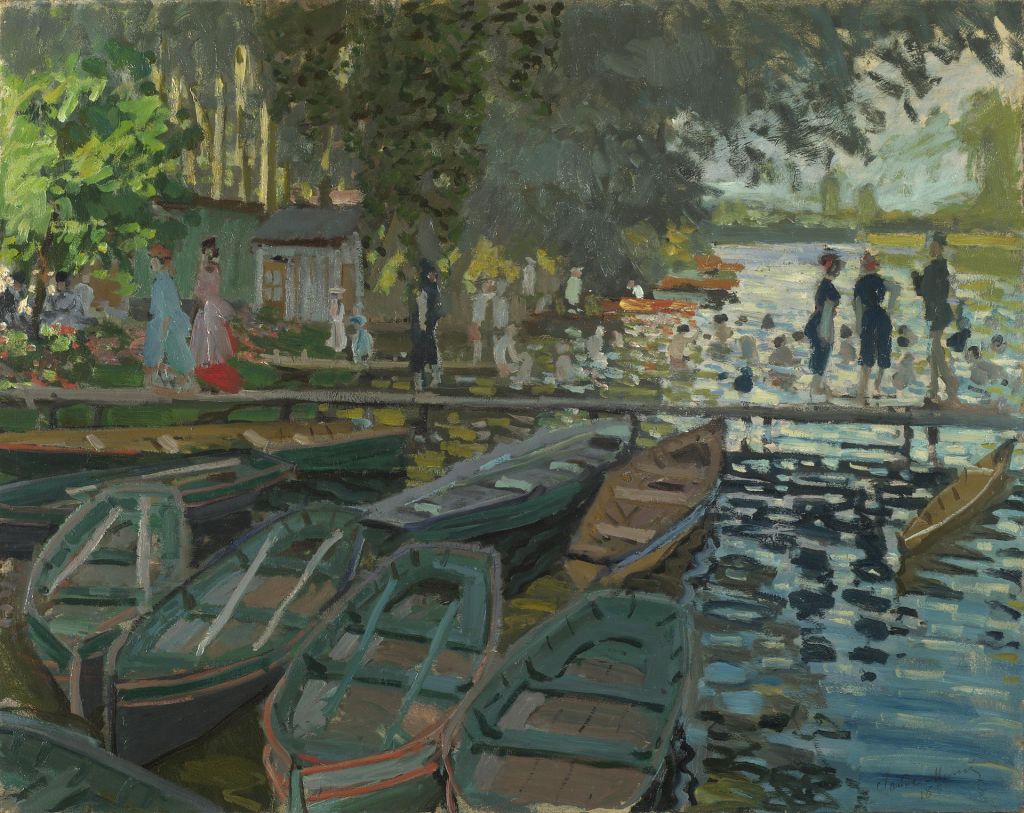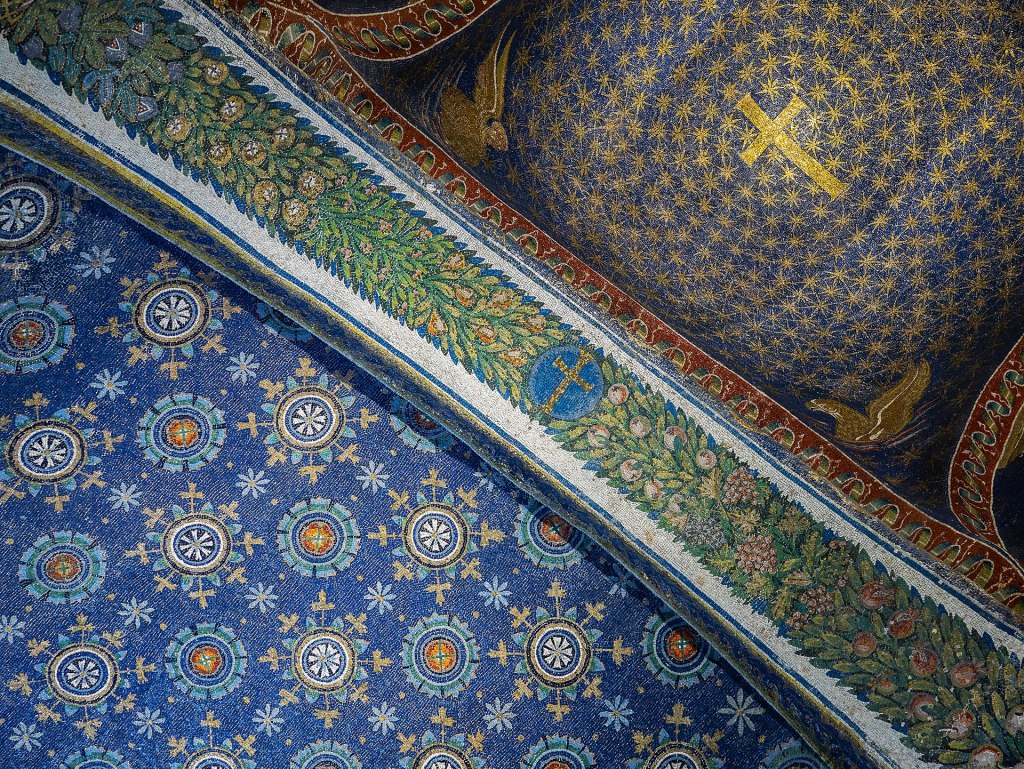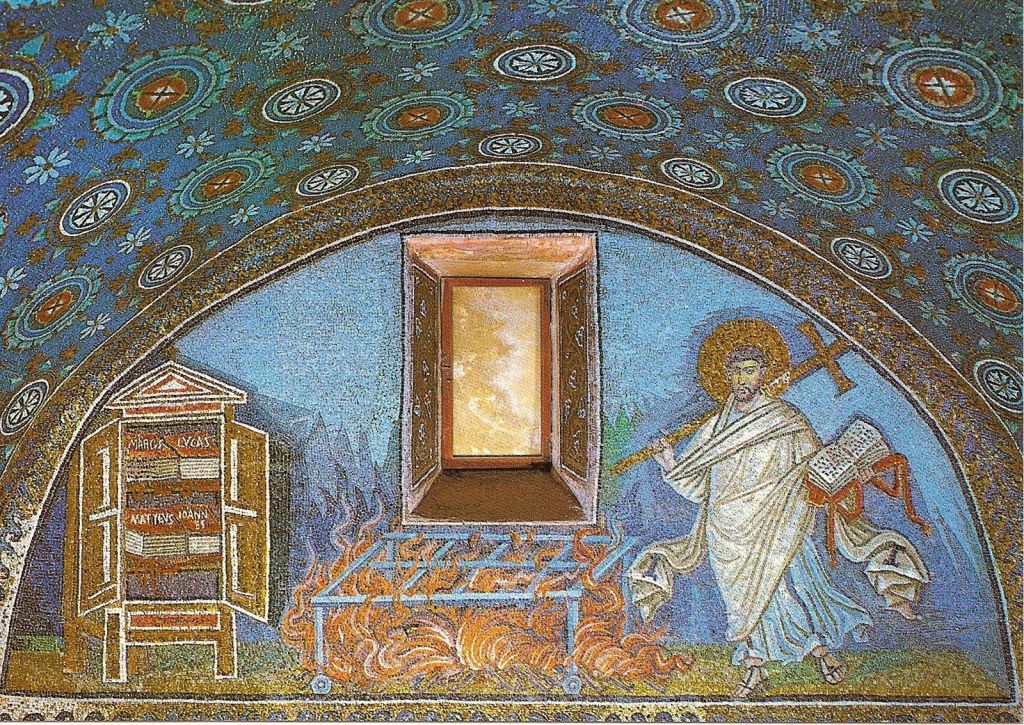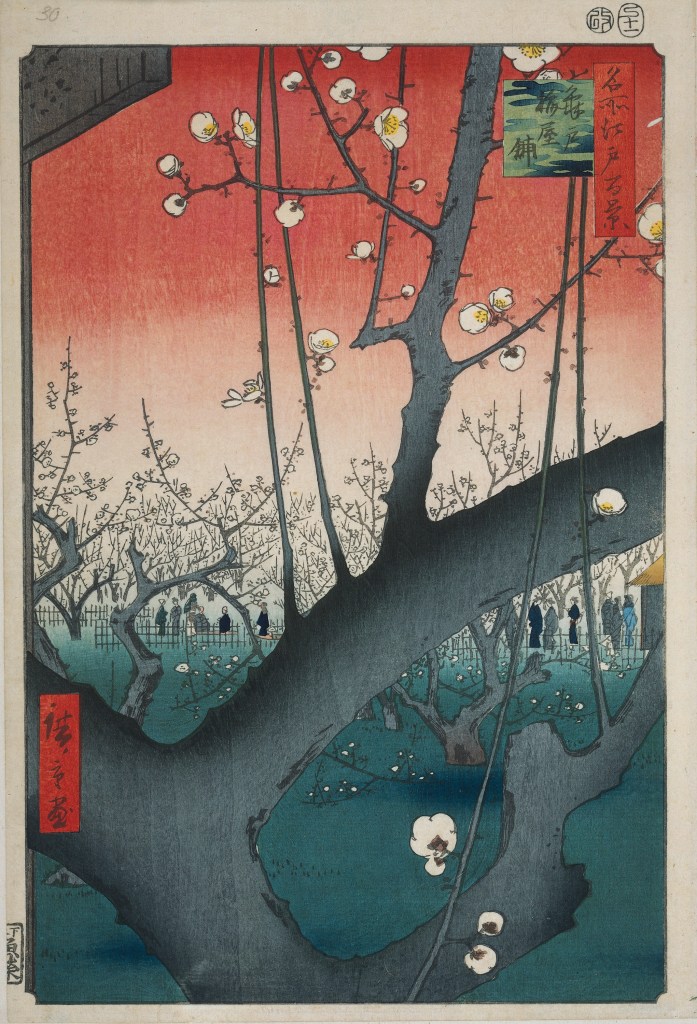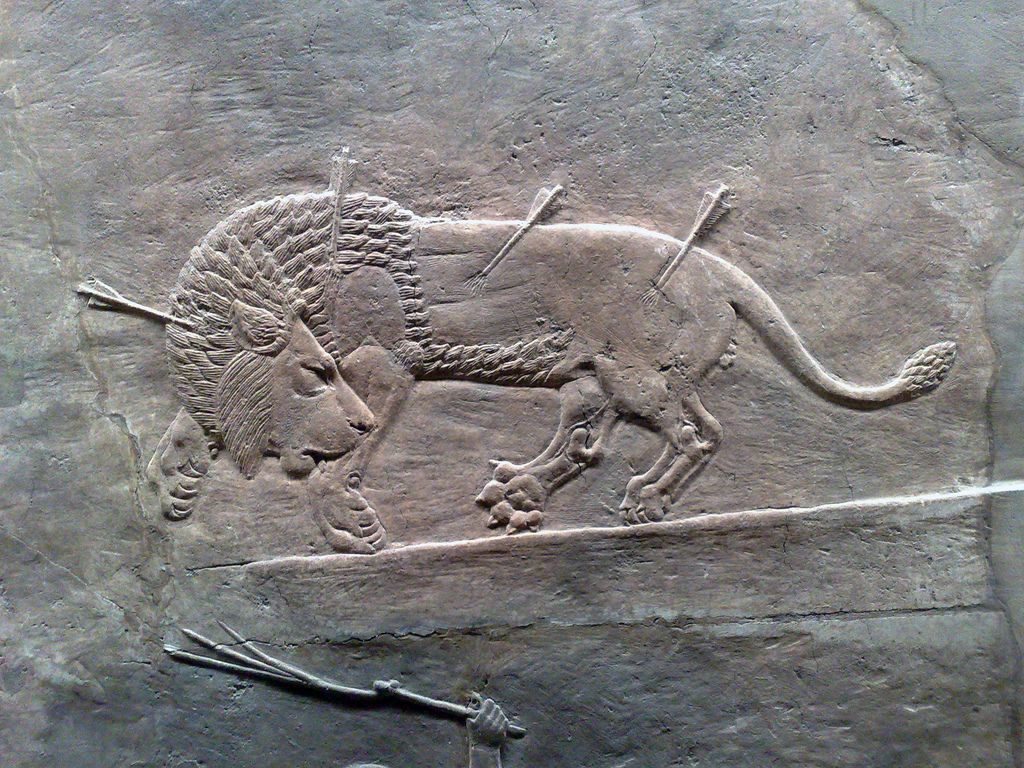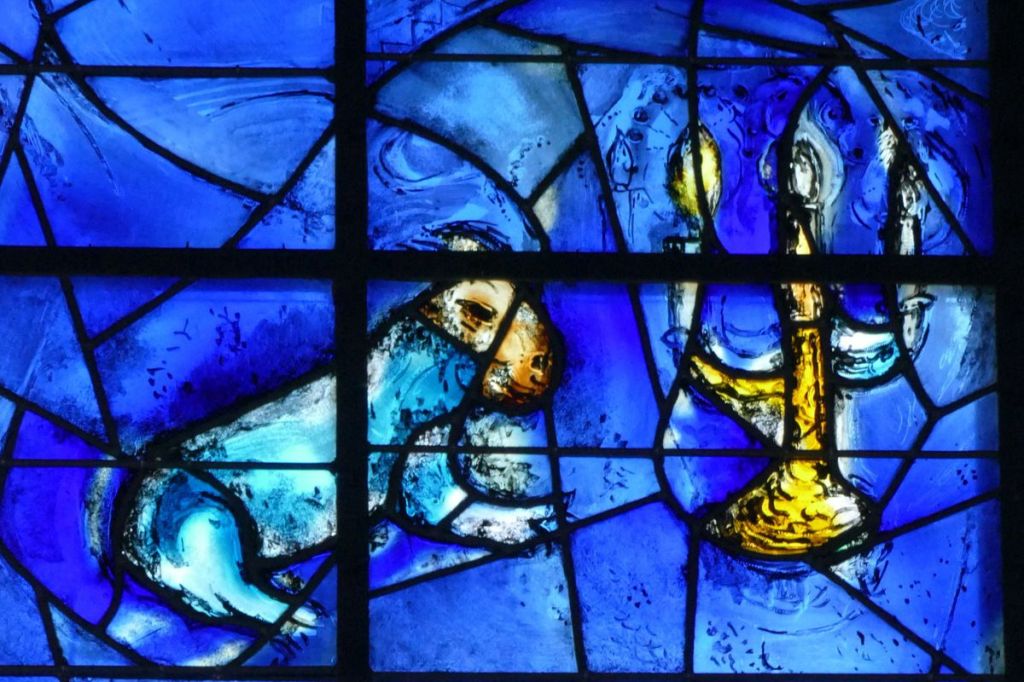On this extra leap year day February Art presents not one but two-by-two masterpieces painted side-by-side by two Impressionist pioneers. Claude Monet and Pierre-Auguste Renoir took different paths to revolution: Renoir began in trade as a porcelain painter, and compared his progress to a bobbing cork – his son the filmmaker Jean Renoir said it was more like the unerring instinct of a migrating bird. Monet’s determination and lack of parental support led him to seek out landscape artists outside the academy like Eugène Boudin and Johan Jongkind who could help him. On meeting at Charles Gleyre’s Paris studio with Alfred Sisley, Frédéric Bazille and others, the two painters quickly became friends, whose mutual influence pushed each other to experimentation.
Setting up easels in 1869 at La Grenouillère, a fashionable boating and bathing spot outside Paris (full of ‘the world’s froth’ said Maupassant), they took on the challenge of recording the shape and movement of people and water, something they solved through rapid notation on white-primed canvases, tubes of paint encouraging bold even unmixed colours, exerted in visible brush strokes and kinetic energy.
The results are so similar yet so different: Renoir drawn to details of people and their postures, sketching clusters of figures in conversation with the swift delicate marks he learnt from porcelain; Monet more interested in colour theory and patches of light, as witness the silhouetted negative space between bathers or deliberate complementary colour juxtapositions (orange and blue, red and green) in the foreground boats.
Whichever you like best, their experiments didn’t stop there: Renoir, in place all summer, joined his friend on more paired canvases from the same spot, looking a few degrees west for fabulous colour compositions that make you want to plunge in the water.
150 years after the group’s first exhibition (called impressionist after a reviewer’s insult), nearly 155 years from that late summer at La Grenouillère, the world is still coming to terms with this sudden new way of seeing.



